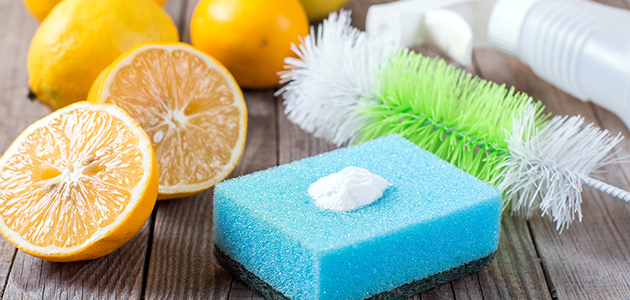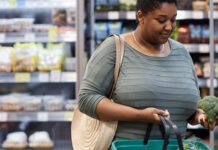
In recent years there has been increased interest in using non-toxic, chemical-free products in our homes. There are certainly different schools of thought as far as what you need to use to properly banish the dirt and bacteria that lurk in your home, but there’s no denying that the chemicals used in some store-bought cleaning products can be extremely harsh. In fact, the warning labels on these products prove that they can be harmful, dangerous, and sometimes even fatal if misused or ingested.
According to WebMD1, household cleaners with harsh ingredients may cause skin irritation, airway and eye irritation; may contribute to a rise in childhood allergies because they clean your home too well and, as a result, may contribute to a child’s immune system not developing normally; and can be poisonous.
So what’s the answer when we want to keep our homes looking and smelling as clean as possible but also want to use fewer potentially dangerous chemicals? Well, one solution is to make your own non-toxic cleaners and to swap out corrosive chemicals with a little old-fashioned elbow grease. As an added bonus, non-toxic cleaners are better for the environment – and you might even find yourself saving money as you save the planet!
Safer cleaning ingredients
You might be surprised to know that the vast majority of cleaning jobs in your home can be accomplished with vinegar, baking soda, soap and water2
Baking soda: cleans, deodorizes, softens water and scours.
Vinegar: cuts grease, removes mildew, odors and some stains; prevents and removes wax build-up.
Soap: unscented, naturally derived soap, like Castile soap (made exclusively with vegetable oils), is biodegradable and will clean just about anything.
DIY cleaning product recipes and tips
Earth Easy3 has some great suggestions and recipes for safer cleaning solutions:
All-purpose cleaner
Mix ½ cup vinegar and ¼ cup baking soda into ½ gallon (2 liters) of water. Use for removal of water deposit stains on shower stall panels, bathroom chrome fixtures, windows, bathroom mirrors, etc.
Disinfectant
Mix 2 teaspoons borax, 4 tablespoons vinegar, and 3 cups hot water. For stronger cleaning power, add ¼ teaspoon liquid castile soap. Wipe on with dampened cloth or use non-aerosol spray bottle. (This is not an antibacterial formula. The average kitchen or bathroom does not require antibacterial cleaners.) To disinfect kitchen sponges, put them in the dishwasher when running a load.
Drain cleaner
For light drain cleaning, mix ½ cup salt in 1 gallon water, heat (but not to a boil) and pour down the drain. For stronger cleaning, pour about ½ cup baking soda down the drain, then ½ cup vinegar. The resulting chemical reaction can break fatty acids down into soap and glycerin, allowing the clog to wash down the drain. After 15 minutes, pour in boiling water to clear residue. Caution: Only use this method with metal plumbing. Plastic pipes can melt if excess boiling water is used. Also, do not use this method after trying a commercial drain opener–the vinegar can react with the drain opener to create dangerous fumes.
Mold and mildew cleaner
Use white vinegar or lemon juice full strength. Apply with a sponge or scrubby.
Toilet bowl cleaner
Mix ¼ cup baking soda and 1 cup vinegar, pour into basin and let it set for a few minutes. Scrub with brush and rinse. A mixture of borax (2 parts) and lemon juice (one part) will also work. For rust stains, spray with vinegar and leave overnight before brushing with baking soda.
Stay safe
Even though your natural or non-toxic cleaning products are safer than their chemical-laden counterparts, you should still keep your cleaning solutions clearly labeled and stored safely away from children.
Remember, home cleaning products like these are meant to minimize our dependence upon toxic substances. Results may vary, and can’t be guaranteed to be 100% safe and effective. Use common sense when you’re making and trying these solutions and any others you may find online. Always test first on a small, hidden area if possible, and use caution when introducing any new product into your home.
For 27 more chemical-free cleaning solution recipes, Greatist, and for 21 quick, safe and inexpensive DIY cleaning ideas, visit Better.
SOURCES
1 https://www.webmd.com/children/features/safer-cleaning-products#1
2, 3 https://learn.eartheasy.com/guides/non-toxic-home-cleaning/
416894D CAN/US (01/19)




